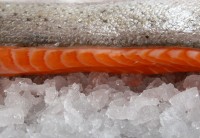Studies on Columbia River fish consistently demonstrate that toxic pollution is impacting one of our region’s greatest food resources. This is a major problem for people who rely on local fish as a healthy food source. Fish advisories warning people not to eat certain fish, or to limit how much fish they consume, reflect the severity of the problem. In recent years, Columbia Riverkeeper has worked closely with Columbia River tribes to convince Oregon and Washington to change state laws intended to protect public health which aren’t getting the job done.
One of the major problems is states’ underlying assumption about how much fish people eat. Water quality laws—referred to as water quality standards—designed to protect public health are determined based on an assumption about how much fish people eat. Generally speaking, if the state assumes people eat very little fish, the government will tolerate higher levels of toxic pollution. This is partly to blame for the high levels of toxic pollution we see in many Columbia River fish. After years of hard work by tribes, Riverkeeper, and many others, in 2011 Oregon adopted new standards for toxic pollution that finally account for the large amount of fish consumed by tribal members, Asian and Pacific Islanders, and recreational fishers. Washington State is next.
Washington is in the early stages of laying the groundwork to align the law with the facts—people eat a lot more fish than Washington’s current laws assume. On January 18th, Riverkeeper submitted public comments on a report that will pave the way for adopting new laws that reduce toxic pollution. Based on extensive studies on fish consumption in the Pacific Northwest, Riverkeeper urged Washington State to adopt a new “fish consumption rate” that will protect the vast majority of people who regularly eat locally caught fish. For more information on Riverkeeper’s work to protect people and the Columbia River’s resources from toxic pollution, visit our Toxics Reduction webpage.



